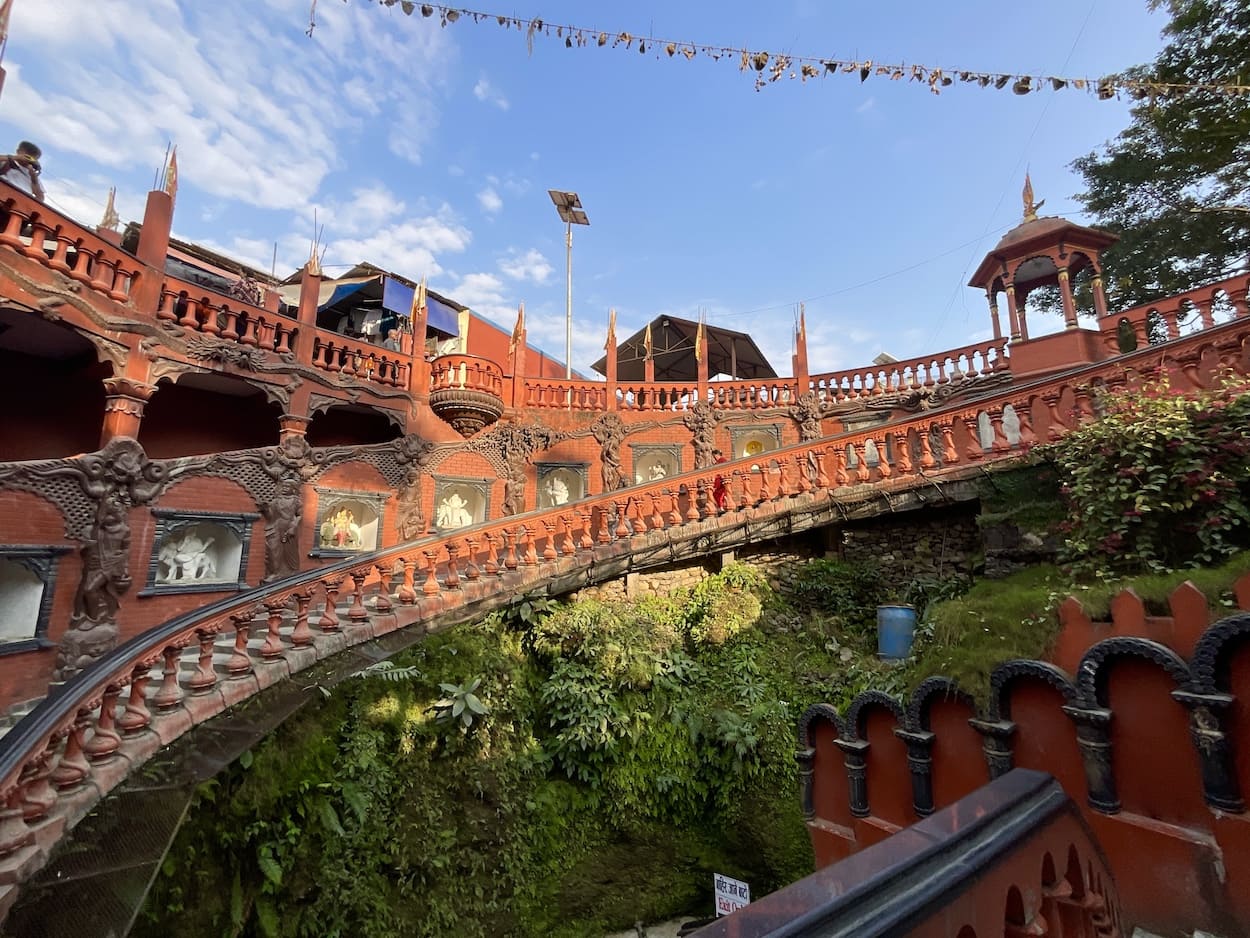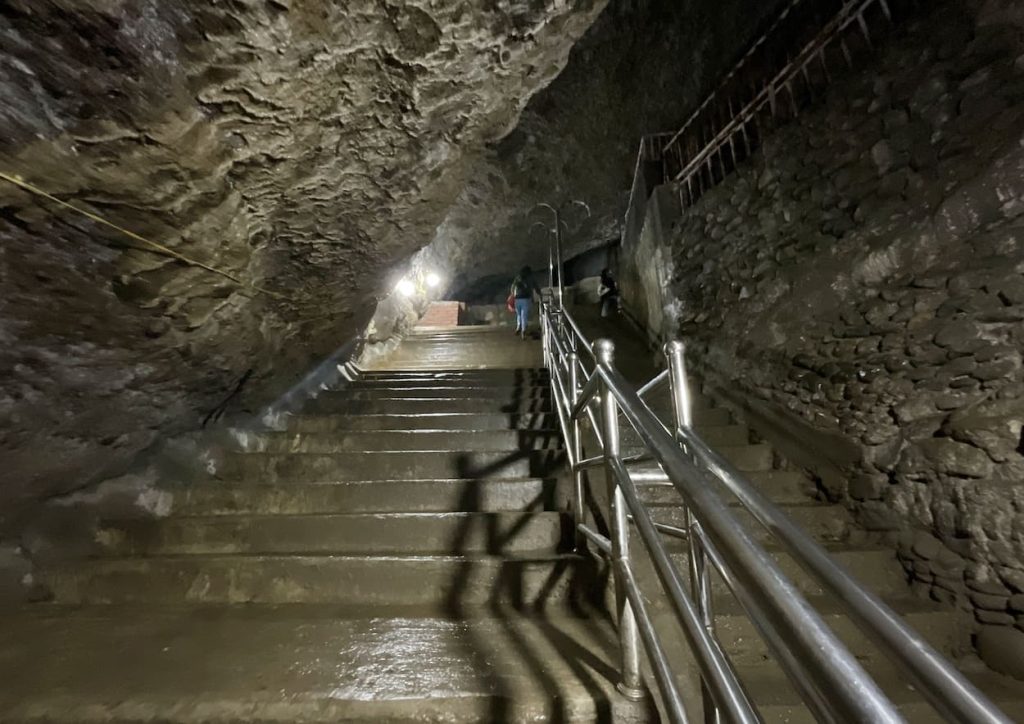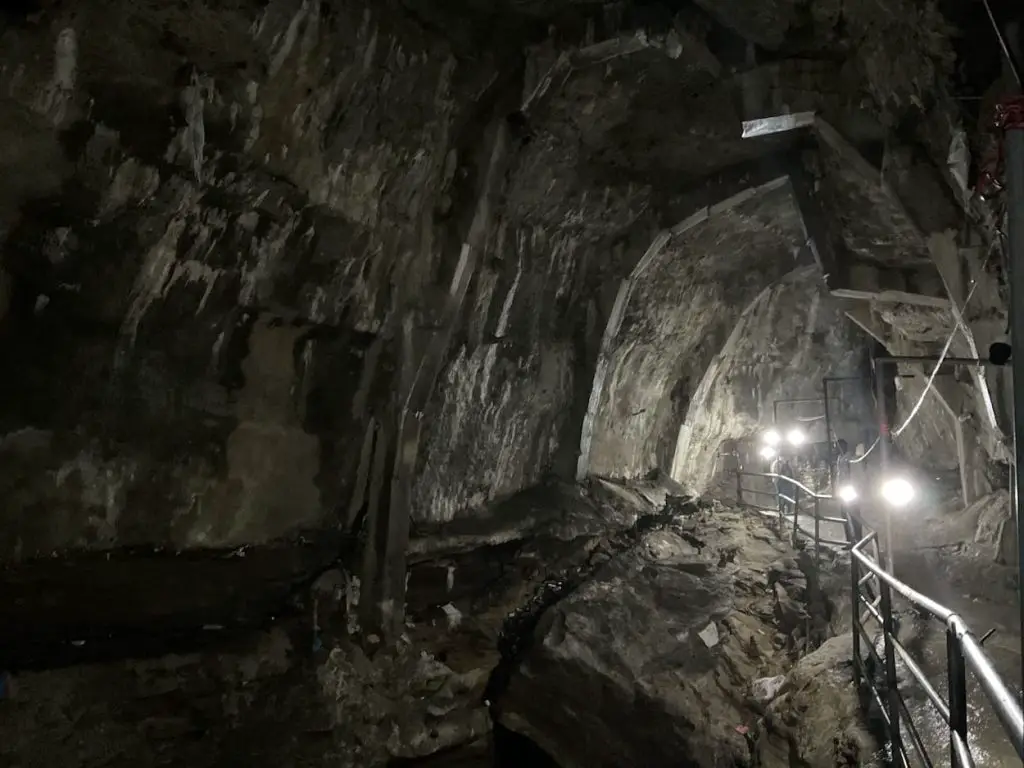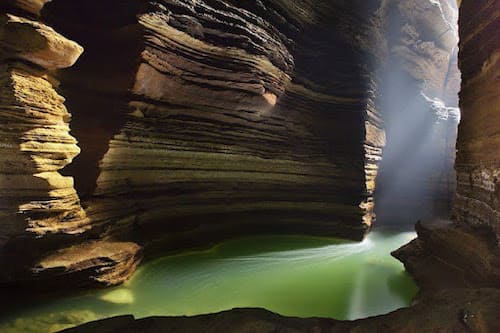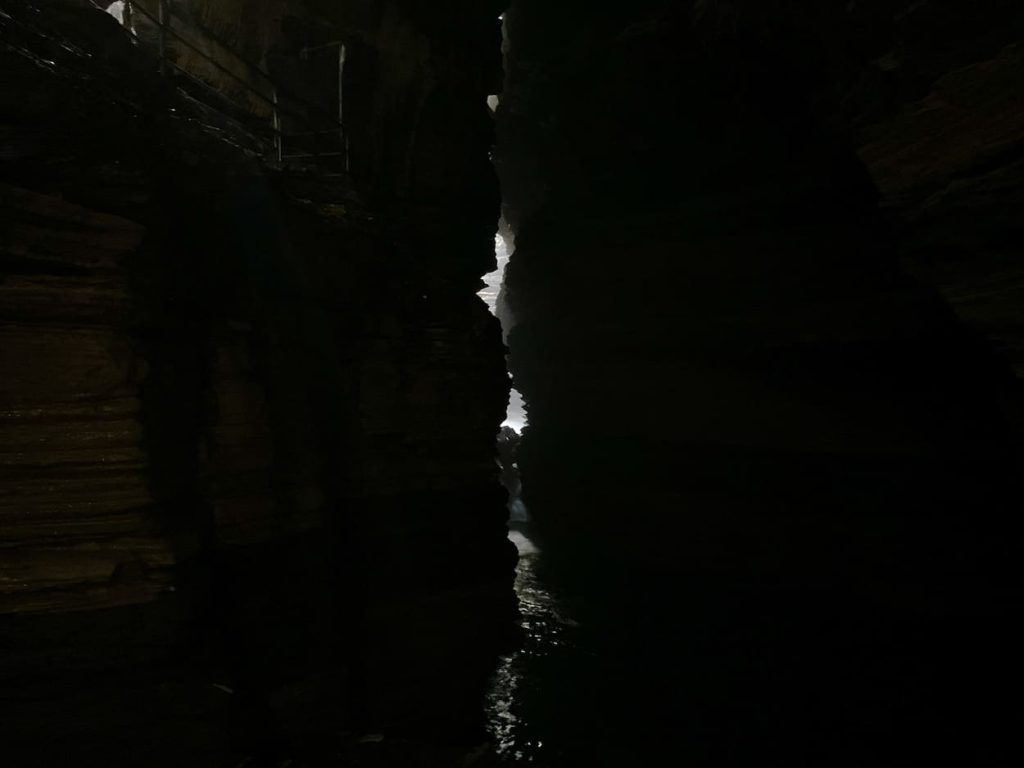The Gupteshwor Mahadev Cave is Nepal’s most well-known cave, and it is situated near Davis Falls on the opposite side of the World Peace Stupa in Pokhara. The Gupteshwor cave is one of three main caves in Pokhara that attract tourists.
The other two caves that you may want to visit while in Pokhara are Mahendra Cave and the Chamero Gufe (Bat Cave). With its proximity to Lakeside and other tourist destinations like Devi’s Falls, Peace pagoda, and the Shiva Statue, the Gupteshwor Cave in Pokhara is by far the most popular.
According to legend, the cave was found in the sixteenth century and has been an important religious destination for many years. Although the cavern dates back centuries, the construction on the main cave entrance began in 1991, making it a relatively new thing to do in Pokhara.
The cavern provides an exciting adventure for visitors as they travel into the depths of the underground chamber. Moreover, the exterior of the cavern has been developed. It is a beautiful place to take pictures, do a little souvenir shopping, and take in the culture and religion of Nepal.
In this blog, I provide information on the Gupteshwor Mahadev Cave in Pokhara, so you can decide if you are feeling brave enough to venture into the dark, damp cave while staying in Pokhara!
History of the Gupteshwor Mahadev Cave
In the 16th century, three local men were said to have stumbled into the Gupteshwor Cave while cutting grass. They found several Shiva shrines, statues, and other Hindu deities inside the cave’s darkness. Nageswor, Saraswati, Mahadev, and Parvati were among the shrines and statues the men found.
Moreover, the Shiva Linga at the center of the first cavern is one of the region’s largest, attracting many devotees and pilgrims every year. The Shiva Lingas are both natural occurrences (stalagmites) and have been formed and carved by artisans over the centuries. Finally, the area was called Gupteshwor Mahadev to pay homage to Shiva, as in Sanskrit, it means “Great God.”
Moreover, while investigating the cave, the men discovered that there was a waterfall flowing through the back of the cave. After further investigation, they found that the waterfall originated in Patale Chhango (later known as Davi’s falls).
Visiting the Gupteshwor Madadev Cave in Pokhara During Monsoon Season
During the monsoon season and heavy rainfall, the second portion of the cave will be closed for safety reasons. This is because it typically floods from Devis falls and is thus inaccessible to visitors.
Therefore, I recommend visiting the cave during the dry season so you can explore the entire cavern. The best time to visit Gupteshwor Cave in Pokhara is from October to late May / early June. Also, check the weather before visiting, as the cave and the stairs leading down to it can become extremely slippery.
Outside the Gupteshwor Mahadev Cave
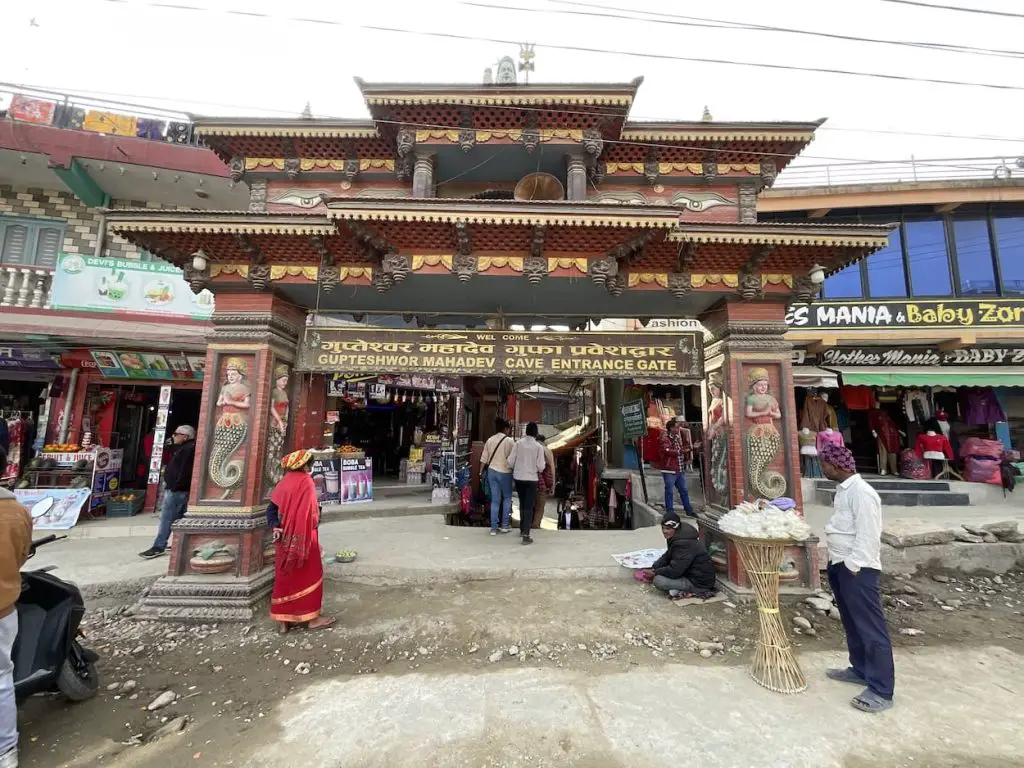
There are sights to see before you go into the actual cave. After passing under the wayside archway, you’ll find a dozen souvenir shops. However, you’d be better off shopping in Lakeside or even Kathmandu – as you will get a better deal. Additionally, you can get a good view of the cave entrance, the statues leading up to it, and the spiral staircase down from a concrete balcony in front of the ticket window.
Many contemporary statues and plaster sculptures can be found here, including those of bearded men and Nepali deities. As many of the sculptures are sensual in character, there seems to be a nod to some of the erotic carvings from the Kathmandu Valley here.
Inside the Gupteshwor Mahadev Cave
Gupteshwor Cave is one of the longest in all of Nepal, with a length of 2,950 meters. As you descend into the cave, you will realize just how massive the tunnels are. Additionally, you’ll notice how gloomy it is within the cave as you walk through the mouth of the cave. Although there is lighting, it merely consists of randomly placed light bulbs hanging from the damp walls as you descend further underground to the first unexpected sight, which resembles a cow shed. Inside the shed, you will see a cow sitting over a Shiva lingam. Although it may be surprising, the cow has significant meaning in Hinduism as it resembles Mother Earth, as it is a source of goodness, and its milk nourishes all creatures.
As you descend the remaining 40 meters into the cave, you will pass additional statues and shrines. As you wind further into the unknown, you will eventually reach the main Shiva temple, where you will see devotees paying their respects. Remember that people are prohibited from photography in this area – a guard usually monitors and keeps an eye on this as well.
After the main Shiva Shrine, you will continue behind and below the temple to the second 140-meter-long section of the cave. This next cavern is one of the best parts of the adventure, as the cave walls will be decorated with different hues and colors from the reflection of the water on the open cave walls. Finally, you reach a metal stairway that descends further down, which will provide you with the wonderful sounds of the gushing waterfall ahead.
However, keep in mind that these lower caverns will be closed throughout the rainy season for safety reasons.
Finally, use caution as the ground and staircase can be slippery. After going down the stairway, you will need to proceed across some uneven, rocky terrain that will be damp before you can see the waterfall.
How big is the Gupteshwor Mahadev Cave in Pokhara?
The cave is the longest in Nepal and has a length of 2,950 meters.
The area also has a temple, a sleeping Vishnu, a nice ground for sitting and relaxing, souvenir shops, and a large staircase leading down to the mouth of the cave. Therefore, the cave’s premises are much bigger than the underground cavern.
What time does Gupteshwor Cave open?
Gupteshwor Cave in Pokhara is open from 7 am to 6 pm throughout the year. However, the cave’s inner part (second chamber) remains closed during the rainy season.
Gupteshwor Mahadev Cave Ticket Price
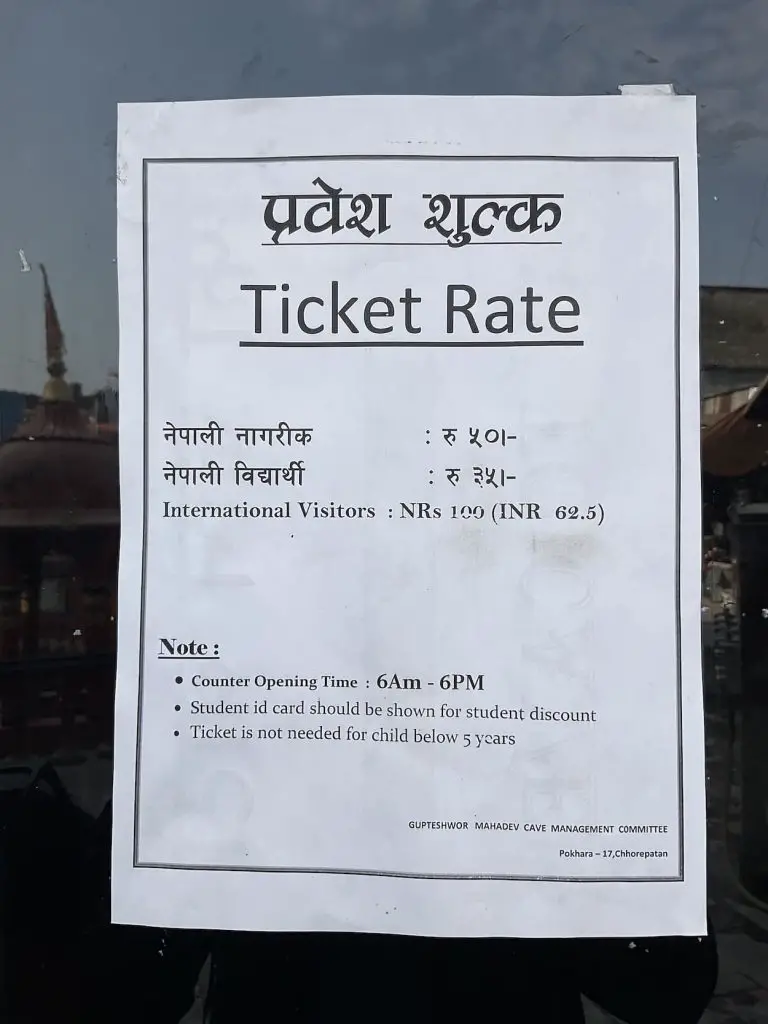
Ticket price for the Gupteshwor Cave is NPR 50 for Nepalis, and NPR 100 for International Visitors.
Students can also get a discount with a Student ID card. Finally, children under 5 do not need a ticket at all. Overall the entrance fee is reasonable for both Nepalis and foreigners.
The main expense of the trip will come from traveling from Lakeside to the cave. A taxi from Lakeside to the cave and Devi’s Falls will cost you between NPR 500 and NPR 700 – depending on how good you are at bartering! Additionally, you will be able to take public transportation as well. Public transportation will take two buses and cost you less than NPR 100 total!
Luckily, there are a few other activities in the area of the cave that you can add to your trip!
Nearest Tourist Attraction to Gupteshwor Mahadev Cave:
While making a trip to the cave, add a few other nearby attractions to your itinerary to get the most out of your trip! A few other attractions that are close to the Gupteshwar Mahadev Cave include:
- Devi’s Fall
- Peace Pagoda
- Shiva Statue
- Tibetan Refugee Camp
If you are looking for some other exciting things to do while visiting Pokhara, then make sure to check out my Pokhara Travel Guide!
Gupteshwor Mahadev Cave Contact Details:
Below are the contact details for the cave.
- Website: https://gupteshworcave.com.np/
- Phone: (+977) 061-460587
- Email: info@gupteshworcave.com.np
- Address: Pokhara-17 Chhorepatan, Kaski, Nepal
- Operating Hours: 6 am-6 pm
Gupteshwor Mahadev Cave:
As one of the largest tourist attractions in Pokhara, the Gupteshwor Cave provides an exciting adventure into the depths of the underground caverns. If you have never been to caves before, then you will be quite pleased with the overall experience as you make your way to the waterfall area in the cave.
However, if you have been caving before, your trip to Gupteshwor Cave in Pokhara may be anticlimactic. Luckily, if your family and friends still want to visit the area, you will be pleased to know that there are plenty of other activities to partake in after seeing the cave.
Once you finish at the cave, make sure to check out the Peace Pagoda, Devi’s Falls, or even take a trip to the Tibetan Refugee Camp. Where you can get some delicious Tibetan food at one of my favorite restaurants: The Little Tibet Cafe in Pokhara!
